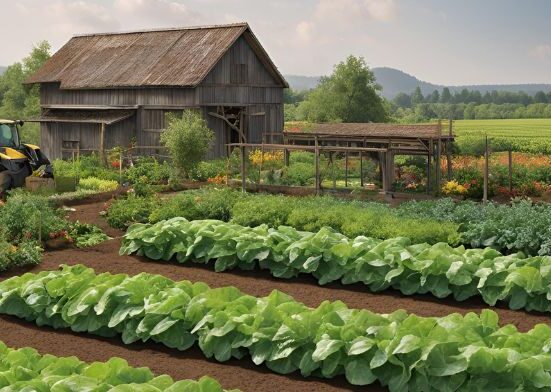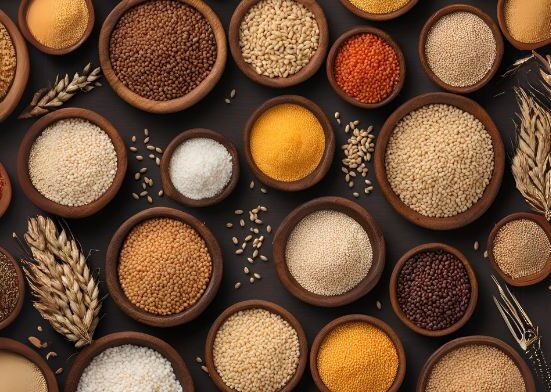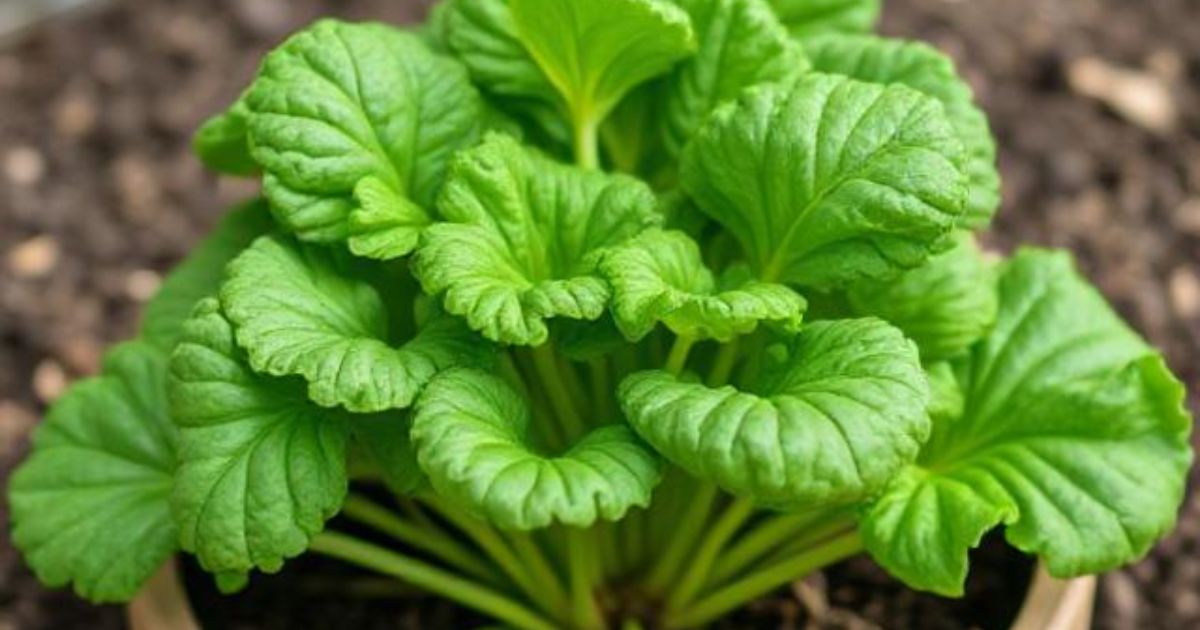If you’re eager to see quick results in your garden, fast-growing vegetables are the perfect place to start. Whether you’re a beginner gardener, working with a small space, or want to enjoy fresh produce as soon as possible, choosing vegetables that grow quickly can be both rewarding and practical.Many fast-growing vegetables can be harvested in as little as three to six weeks, meaningIn a single growing season, you can take pleasure in several harvests. They’re ideal for container gardens, raised beds, and even windowsills, making them accessible for just about anyone, regardless of gardening experience.In this blog post, we’ll explore some of the fastest-growing vegetables, how to plant and care for them, and tips to make your harvest thrive. So, if you’re ready to turn a few seeds into a fresh meal in record time, keep reading!
What Vegetables Grow Quickly
If you’re eager to enjoy fresh produce from your garden in just a few weeks, fast-growing vegetables are a great place to start. These quick-yielding crops are ideal for beginners, small spaces, or those looking to get multiple harvests in a single season. Among the fastest are radishes, which can be harvested in as little as 20 days and thrive in cool weather. Leaf lettuce and arugula are also speedy growers, offering tender leaves in just 30 days or less. Spinach matures in about 30–40 days and does well in spring or fall. For a flavorful addition, green onions and mustard greens can be picked within a month of planting. Baby carrots and turnips are quick root vegetables, What Is The Autumn Harvesting ready in 30–50 days depending on the variety. If you’re gardening in warmer weather, zucchini and bush beans grow fast and begin producing within 45–60 days. These vegetables not only provide quick results but also encourage continuous gardening and healthy eating habits. fast growing flowers With proper soil, sunlight, and watering, even a beginner can enjoy a steady supply of fresh, homegrown veggies in just a few short weeks.
Why Choose Fast-Growing Vegetables?
quick growing plants are ideal for gardeners who want quick gratification or need to make the most of a short growing season. These crops typically mature in 20 to 60 days, enabling several harvests throughout a single growing season. They’re also great for beginners, as they require less time to manage pests, diseases, or weather challenges. Plus, quick harvests mean you can experiment with different varieties and enjoy fresh produce sooner.
In this guide, we’ll cover vegetables that thrive in various climates, their planting and care instructions, and how to ensure a bountiful yield. Let’s dive into the fast growing vegetables you can plant today!
Radishes (20–30 Days to Harvest)
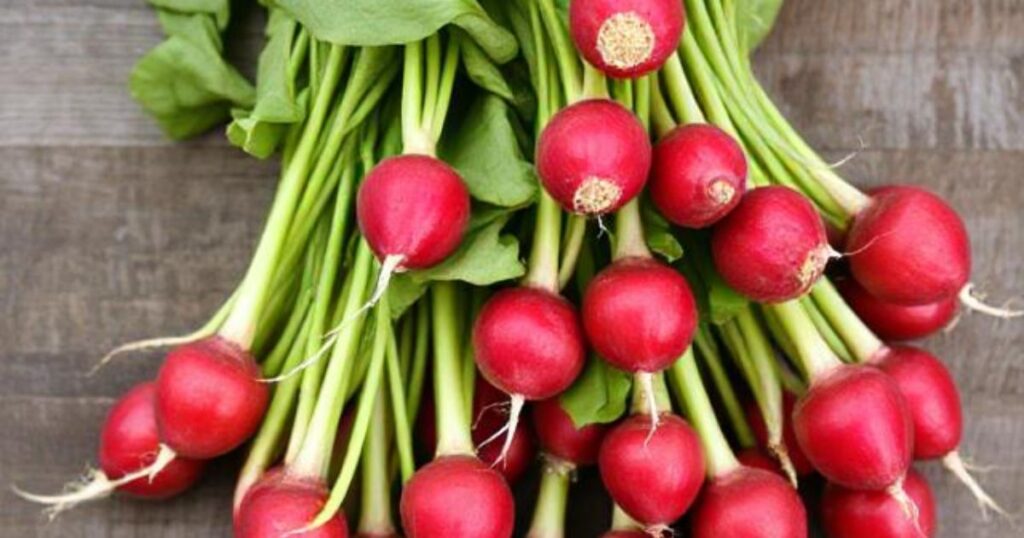
Radishes are the poster child for fast-growing vegetables. In about 20 to 30 days, they are frequently ready for harvest. Their vibrant colors—red, pink, white, or purple—and crisp texture make them a favorite for salads, garnishes, or even roasting.
Growing Radishes
- Soil: Radishes prefer loose, well-drained soil with a pH of 5.8 to 6.8. Work in compost to improve soil fertility.
- Sunlight: Full sun (6–8 hours daily) is ideal, but they tolerate partial shade.
- Planting: Sow seeds directly in the garden, ½ row is 12 inches apart, 1 inch deep, and 1 inch apart. Thin seedlings to 2 inches apart for larger roots.
- Watering: Don’t let the soilget wet, but keep it consistently moist. veggies that grow fast Dry soil can lead to woody, spicy radishes.
- Varieties: Try ‘Cherry Belle’ for classic red radishes or ‘Easter Egg’ for a mix of colors.
Tips for Success
- Plant every 10–14 days for a continuous harvest.
- Harvest promptly to avoid pithy or overly spicy roots.
- Use radish greens in salads or pestos for zero waste.
Spinach (30–45 Days to Harvest)
Spinach is a nutrient-packed leafy green that grows quickly, especially in cooler weather. Its delicate leaves are ideal for smoothies, salads, and or cooked dishes.
Growing Spinach
- The pH of the rich, well-drained soil is 6.0 to 7.0. Add compost or aged manure for nutrients.
- Sunlight: Full sun to partial shade, with 4–6 hours of sunlight daily.
- Planting: Sow seeds ½ inch deep, 2 inches apart, in rows 12–18 inches apart. Thin to 4–6 inches for mature plants.
- Watering: Don’t overwater; keep the soil damp. To prevent fungal issues.
- Varieties: ‘Bloomsdale’ is a crinkly-leafed favorite, while ‘Baby’s Leaf’ is great for quick baby spinach harvests.
Tips for Success
- To avoid this, plant in the early spring or fall. Bolting (flowering) in hot weather.
- Harvest outer leaves for continuous growth or cut the entire plant at the base.
- Protect from pests like leaf miners with row covers.
Lettuce (30–50 Days to Harvest)
Lettuce is another fast-growing leafy green, with varieties like loose-leaf lettuce ready in as little as 30 days. It’s perfect for salads, wraps, or sandwiches.
Growing Lettuce
- Soil: Loose, fertile soil with a pH of 6.0 to 7.0. Incorporate organic matter for best results.
- Sunlight: Full sun to partial shade, with 4–6 hours of light daily.
- Planting: Sow seeds ¼ inch deep, 1 inch apart, in rows 12 inches apart. Thin to 4–8 inches, depending on the variety.
- Watering: To keep the soil damp but not wet, Green Magic Homes: Sustainable water it frequently. Mulch to retain moisture.
- Varieties: ‘Black Seeded Simpson’ for loose-leaf or ‘Buttercrunch’ for butterhead types.
Tips for Success
- Harvest outer leaves for a cut-and-come-again approach or cut the whole head.
- Plant in succession every 7–10 days for a steady supply.
- Use shade cloth in hot climates to prevent bolting.
Arugula (30–40 Days to Harvest)
Arugula, also known as rocket, is a peppery leafy green that adds a bold flavor to salads and dishes. It’s ready to harvest in just 30 days for baby leaves.
Growing Arugula
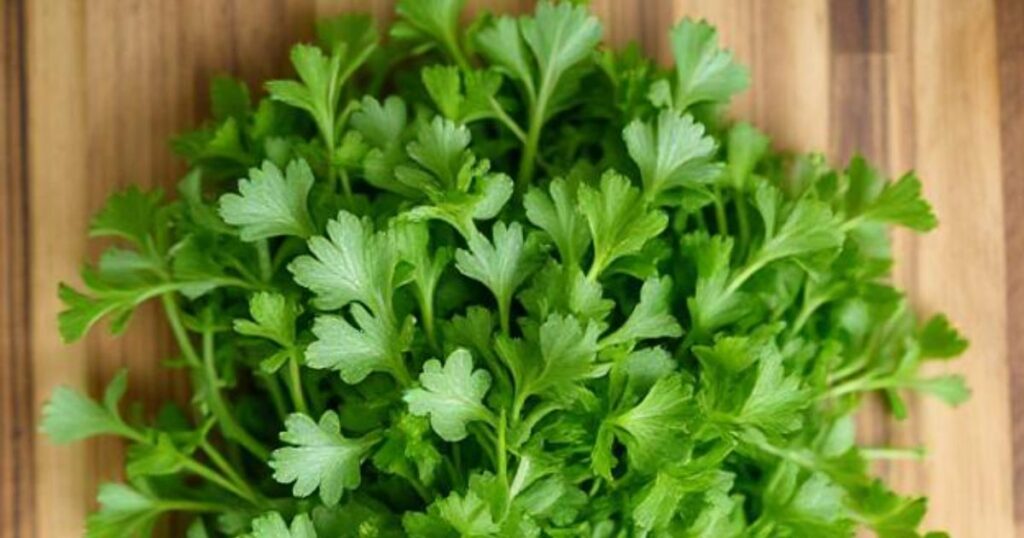
- Soil: Well-draining earth with a pH of 6.0 to 7.0. Arugula tolerates poorer soils but benefits from compost.
- Sunlight: Full sun to partial shade, with 4–6 hours of daylight.
- Planting: Sow seeds ¼ inch deep, 1 inch apart, in rows 12 inches apart. Thin to 4–6 inches for larger plants.
- Watering: To maintain soil moisture without becoming soggy, water it frequently.
- Varieties: ‘Astro’ is fast-growing, How To Grow Zinnia Flowers while ‘Wild Rocket’ offers a stronger flavor.
Tips for Success
- For a softer taste, harvest fresh leaves or allow them to mature for a spicier kick.
- Plant in early spring or fall, as arugula bolts in heat.
- Watch for flea beetles and use row covers if needed.
Green Onions (30–50 Days to Harvest)
Green onions, or scallions, are versatile and fastest veggies to grow, providing fresh flavor for salads, stir-fries, or garnishes.
Growing Green Onions
- Soil: pH 6.0 to 7.5, well-drained, fertile soil.
- At least six hours of direct sunlight is required.
- Planting: Sow seeds ¼ inch deep, ½ inch apart, in rows 12 inches apart. Alternatively, plant sets (small bulbs) for faster growth.
- Watering: Make sure to keep the soil damp but not soggy.
- Varieties: ‘Evergreen Bunching’ or ‘White Lisbon’ are popular choices.
Tips for Success
- Harvest when stalks are 6–8 inches tall, or let them grow longer for larger bulbs.
- Regrow green onions by planting the root ends from kitchen scraps.
- Thin plants to use as microgreens for an even quicker harvest.
Kale (30–50 Days to Harvest)
Kale is a superfood that grows easiest produce to grow, What are the Easiest Most Profitable Crops to Grow mainly when harvested as baby greens. It’s packed with vitamins and adds crunch to salads or smoothies.
Growing Kale
- Soil: pH 6.0 to 7.5, rich, well-drained soil.
- Sunlight: Full sun to partial shade, with 4–6 hours of light.
- Planting: Sow seeds ½ inch deep, 1 inch apart, in rows 18 inches apart. Thin to 12 inches for mature plants.
- Watering: To keep the soil damp but not wet, water it frequently.
- Varieties: ‘Red Russian’ for tender leaves or ‘Lacinato’ (Dinosaur Kale) for a robust texture.
Tips for Success
- Harvest baby kale at 30 days or wait for mature leaves at 50 days.
- Kale tastes sweeter after a light frost, so consider fall planting.
- Protect from aphids with organic insecticidal soap.
Turnips (35–50 Days to Harvest)
Turnips are a dual-purpose crop, with edible roots and greens ready in just over a month. They’re great roasted, mashed, or added to soups.
Growing Turnips
- Soil: Loose, fertile soil with a pH of 6.0 to 7.0.
- Sunlight: Full sun, with 6–8 hours of light daily.
- Planting: Sow seeds ½ inch deep, 1 inch apart, in rows 12–18 inches apart. Thin to 4–6 inches for larger roots.
- Watering: To avoid woody roots, keep the soil always moist.
- Varieties: ‘Purple Top White Globe’ for classic turnips or ‘Hakurei’ for sweet, tender roots.
Tips for Success
- Harvest greens at 30 days and roots at 40–50 days.
- Thin seedlings early to avoid crowded roots.
- Store roots in a cool, humid place for extended use.
Bush Beans (45–60 Days to Harvest)
Bush beans are compact, fast-growing plants that produce tender pods for fresh eating, canning, or freezing.
Growing Bush Beans
- Soil: pH 6.0 to 7.0, well-drained soil. Add compost for fertility.
- Sunlight: Full sun, with 6–8 hours of light.
- Planting: Sow seeds 1 inch deep, 2–3 inches apart, in rows 18–24 inches apart.
- Watering: Water regularly, especially during flowering and pod development.
- Varieties: ‘Provider’ for early yields or ‘Contender’ for tender pods.
Tips for Success
- Harvest when pods are firm and 4–6 inches long.
- Avoid planting in cold, wet soil to prevent rot.
- Rotate crops annually to avoid soil-borne diseases.
General Tips for Growing Fast-Growing Vegetables
To maximize your success with these fast growing crops, follow these best practices:
- Prepare the Soil: Test your soil’s pH and amend it with compost or organic fertilizer to ensure nutrient availability.
- Water Wisely: Most fast-growing vegetables need consistent moisture. Use drip irrigation or water early in the day to reduce evaporation.
- Use Mulch: Apply organic mulch such as wood chips or straw to control soil temperature, keep moisture in, and inhibit weed growth.
- Use succession planting to guarantee a consistent harvest throughout the season by sowing seeds every 1-2 weeks.
- Monitor Pests: Check plants regularly for pests like aphids, flea beetles, or caterpillars. Use organic methods like neem oil or companion planting to deter them.quick growing flowers
- Choose the Right Season: Many of these vegetables thrive in cooler weather, so plan spring or fall plantings for optimal growth.
Benefits of Fast-Growing Vegetables
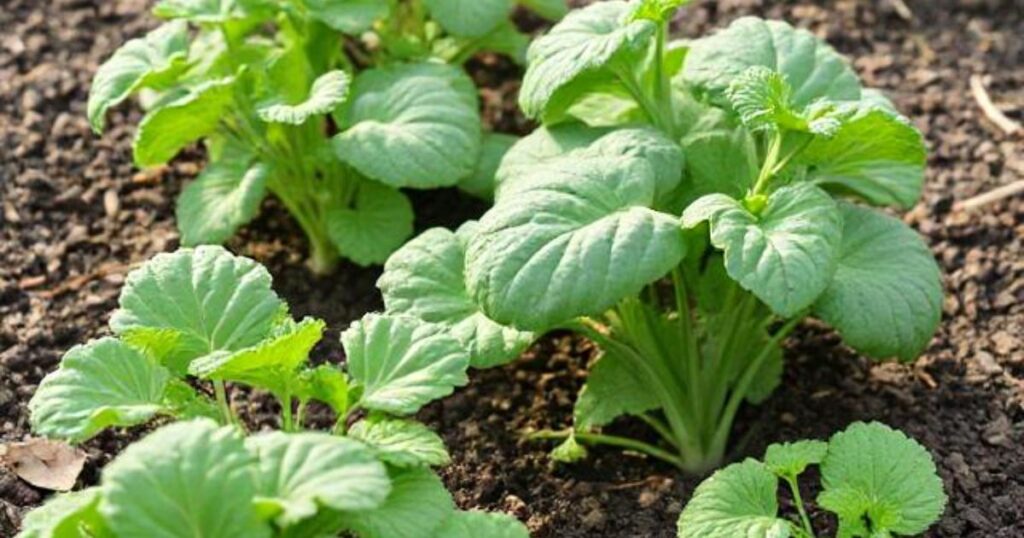
fastest growing indoor plants s offer numerous advantages:
- Quick Results: Enjoy fresh produce in weeks, not months.
- Multiple Harvests: Short cycles allow you to replant for more yields.
- Beginner-Friendly: Less time for issues like pests or diseases to develop.
- Space-Saving: Many are compact, making them ideal for small gardens or containers.
- Cost-Effective: Grow your own food to save on grocery bills.
Conclusion
Fast growing plants are a fantastic way to jump-start your gardening journey and enjoy the fruits (or veggies!) of your labor in just a few weeks. From crisp radishes to leafy greens like spinach and lettuce, these quick producers are perfect for anyone looking to make the most of a short growing season or limited space.Not only do they provide almost instant satisfaction, but they also encourage consistent gardening habits and healthier eating by putting fresh, seeds that grow fasthomegrown food right on your plate. With the proper care good soil, sunlight, Are Sunflowers Perennials and regular watering you can enjoy multiple harvests throughout the year.So, whether you’re planting in containers on a balcony or starting a backyard garden, try including a few of these speedy crops. You’ll be amazed at how fast your garden grows and how rewarding it can be.
FAQ
1. What vegetable grows the quickest from seed?
Radishes are among the fastest-growing vegetables, with some varieties ready to harvest in just 20–25 days. They’re perfect for beginners and can be grown in containers or garden beds with minimal effort.
2. Can I grow these fast vegetables indoors?
Yes, many fast-growing vegetables like lettuce, spinach, and green onions can be grown indoors with enough sunlight or under grow lights. Use shallow containers with good drainage and water regularly for best results.
3. What season is best for quick-growing vegetables?
Spring and early fall are ideal for most quick-growing vegetables, especially leafy greens and root crops. However, warm-season veggies like zucchini and beans grow faster during summer when temperatures are consistently above 70°F (21°C).
4. Do fast-growing vegetables require fertilizer?
While not always necessary, a light application of organic fertilizer or compost can boost growth and improve yields. Avoid over-fertilizing, as it may cause leafy growth at the expense of root or fruit development.
5. How do I harvest leafy greens for continuous growth?
Use the “cut-and-come-again” method: trim outer leaves 1–2 inches above the base, allowing the inner leaves to keep growing. In this manner, you might gradually enjoy several harvests from the same plant.




